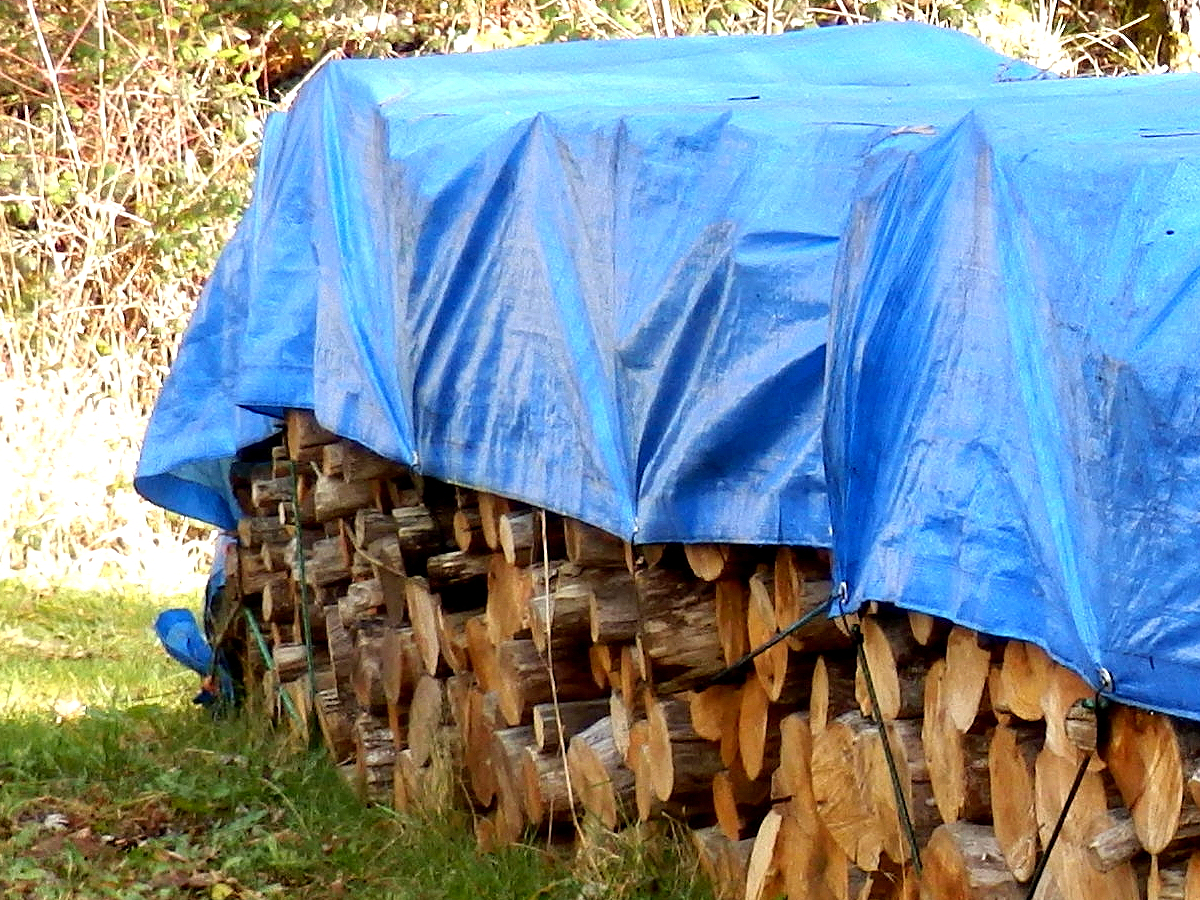Tarp Tips - Urban Farmer's Almanac
October 17, 2020
A good tarp is a Northwest staple. Sure you can find custom-fit covers for your barbecue or ATV, but the right size tarp can do a great job too – protecting your stuff from the elements and keeping them accessible throughout the coming season. To help get you through this winter, and many more to come, we’ve put together a list of top tarp uses.
#10: Cover Your Grill
If your grill cover has seen better days, create your own with a smaller tarp. To cinch the bottom around your grill, just take one of the plastic ends (hooks) off a longer bungee cord and weave it through the grommets. Knot the end once you’ve reached the last grommet.
#9: ATV Cover
Custom ATV covers can quickly wear out when exposed to the elements. You will likely need a 10x10 tarp to completely cover your ATV or other small vehicle. To cinch the bottom around your ATV, take one of the plastic hook ends off a longer bungee cord and weave it through the grommets. Knot the end once you’ve run out of bungee. Use several bungee cords to create your cinching mechanism.
#8: Deck Furniture
Depending on how much deck furniture you have, you will need a larger tarp for this one. Look for a 20x20 tarp that includes reinforced grommets. Lay the tarp over the stack and secure it with washers and screws directly into your deck. If you’re on a patio or don’t want to make a hole in your deck, anchor the tarp with heavy-duty tarp clips and milk jugs filled with sand.
#7: Cover Your Cord
If you can measure a cord of wood, then you know what size tarp you need. To make it easy to access your chopped wood, use tent stakes and heavy-duty rope to anchor the tarp.
#6: Ultimate Boat Cover
You’re going to need an extra large tarp for this one. Lay the tarp over the boat and start securing each of the grommets to the boat trailer with bungee cords. If needed, use tarp clips and rope. Just be sure the tarp is completely secure.
#5: AC Guardian
If you don’t need air conditioning until summer, protect it from the elements with a small tarp. Be sure it is completely off before you cover it. Secure the tarp with rope and tent tie downs.
#4: Makeshift Garage
Owning an extra rig or two is great, but finding room for those vehicles in the garage can be impossible. To protect those cars and trucks from the elements, cover them with a large tarp. Secure the tarp in the vehicle’s wheel wells and in several places on the front and rear bumper.
#3: Camping Cover
When you’re out camping, bring along an extra tarp or two to cover your kitchen area or to add privacy to a makeshift bathroom. You can even use a tarp to create a tent or lean-to.
#2: Roof Repair
Northwest roofs take a beating. If your home suddenly develops a leak in the middle of the night or on the weekend (you know, when a qualified roofer is unavailable), quickly cover a large area of your roof with a tarp. Start by laying the tarp over the nearest peak and down to where you feel the leak may be found. (Do not cover any vent piping in the process.) Anchor the tarp to your gutters, down spouts, or bring the rope all the way to the ground and use tent stakes.
#1: Finish Your Unfinished Shed
Want to add some protection to the inside of your shed? A tarp is an easy way to go. Simply attach a tarp to the exposed studs through the grommets. Voila, instant finished shed. You can even add insulation between the studs for added warmth.
Need a New Tarp or Two?
Coastal has all the tarps you could ever need, including bungee cords, tie downs and heavy-duty tarp clips. Stop by this weekend and pick up everything you need to cover what is important to you.
Extra Tarp Tips
Direct sunlight will affect any tarp over time – even those with UV protection. Extend the life of your tarp by keeping it partially shaded when possible.
Movement will cause your tarp to wear more quickly. Wind, either from nature or from towing, will shorten the life of any tarp.
Avoid puncturing your tarp. Once a hole is formed, it can be difficult to effectively patch your tarp for extended use.
